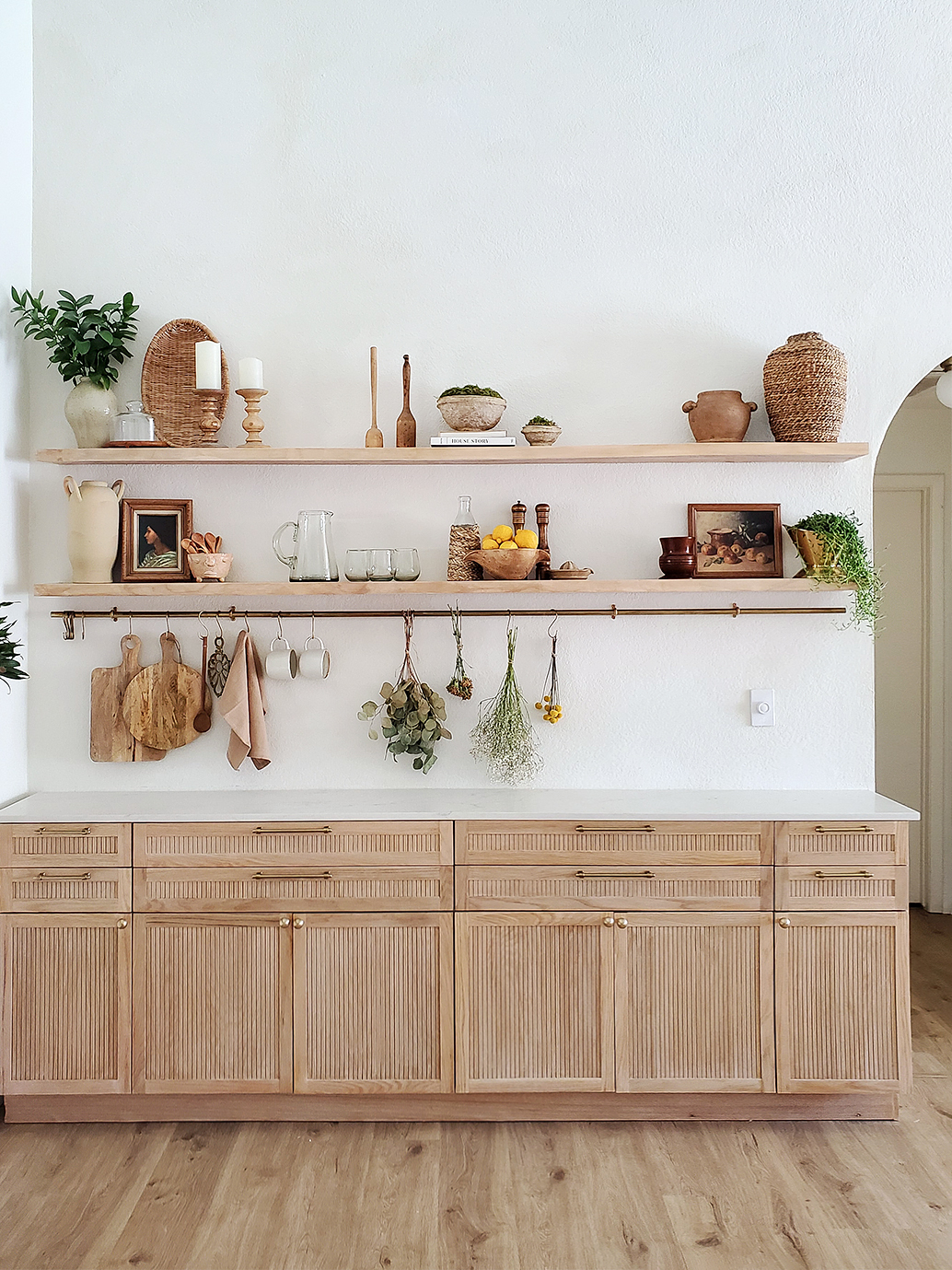We may earn revenue from the products available on this page and participate in affiliate programs.
Six years after moving into their Phoenix home, Sarahli Wilcox and her husband still hadn’t figured out how to make the most of the 15-foot-high ceilings in their dining room. “Everything looked too small,” she says. The foot stretch of wall to the side of their table originally had a sideboard for storage, but the much too small piece looked more like it was awaiting its permanent home rather than a part of the rest of the room’s design (plus it couldn’t hold all of Wilcox’s serveware). To more intentionally outfit (and properly fill) the space, the couple needed to think big—a bar cart/credenza/buffet table all-in-one big.

Opt for Odd Numbers

Because of the uneven measurement of that long wall (it’s just under 9 feet), Wilcox was faced with an awkward width for her cabinetry. “I didn’t want it to come too far out,” she says. So to avoid the cabinetry peaking out into the hallway, Wilcox measured out one 36-inch-wide, one 24-inch-wide, and two 13-inch-wide cabinet boxes from IKEA (the Sektion line). Tambour wood door fronts (purposefully different from the kitchen’s Shaker style) in a custom cherry oak stain make the separate parts appear to be one long built-in. For the counters, she chose a custom quartz slab that almost exactly matches the white painted walls for a seamless look.
For Supersleek Storage, Nix the Brackets

As she is always scouring thrift stores and online marketplaces for vintage finds, Wilcox has amassed quite the vase collection. She needed a place to display her treasures and keep cocktail glasses within easy reach, so she had a pair of 6-foot floating shelves built over the cabinetry. “I needed to use the height and the length of that wall or else the cabinets looked too random,” she explains. Custom shelves were super-expensive, so building allowed Wilcox to both save money and match the exact stain to the cabinet doors. For a cleaner line, she opted out of any sort of brackets underneath, which also allowed for thicker planks and higher weight allowances. (The ledges are supported by anchors drilled into the back of the beams.)
Hack Your Way to an Affordable Kitchen Rail

Wilcox was desperate to find a way to incorporate a brass pot rail in the dining room—she has always loved the traditional English kitchen look. But everything online was more expensive than the entire renovation combined. Luckily she had an advantage: The rail didn’t need to be able to hold cookware—just the occasional mug or dried floral arrangement—so she could improvise. “I found hollow brass tubing on Amazon, along with the hooks, and it gave the exact right look,” she explains. Not to mention the installation—the rods are held up by brass rings (another Amazon find)—was a 30-minute breeze. Now Wilcox’s serving boards and napkins have a home all their own.
